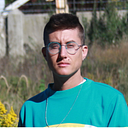Member-only story
I’m a Villain-Coded Queer
Adopting the aesthetics of evil as a gesture of queer pride.
Much has been written about the problem of queer-coded villains. For most LGBTQ people, our first glimpses of self-recognition in media are also major vectors of shame. Many writers have explored how these glimpses harm us, how they taught us to associate our identities and desires with danger.
Comparatively little, however, has been written about being a queer person and choosing to villain-code yourself. This is a phenomenon I have witnessed in dozens of lesbian, gay, trans, bisexual, and asexual friends over the years, and one I experience personally as well. Looking like a bad guy is a huge part of queer aesthetics and fashion. It’s a powerful form of LGBTQ defiance. It’s a way to co-opt the horror and stigma that society has foisted upon us, to render it glittery and glamorous.
Villain-coded queer people cover ourselves in black and adorn our clothes with spikes; we cover our eyes and lips in dark shades and glare at everyone we presume to be straight on the bus. We long for capes, vampire teeth, and red contacts that suggest demonic possession. We admire the glamorous, comfortable lives of fictional gay supervillains, who live on the fringes of society but look damn good doing it. We want to be scary. We want to put people off. We are done seeking mainstream approval. We want what Hannibal Lecter and Villanelle have.
The queer-coding of villains, it turns out, is a two way street. Media creators tried to make their antagonists seem especially menacing and strange by giving them queer traits, but queer people in turn learned to embrace their identities and flout society’s conventions by coating ourselves in villainy.
After years of being told by your favorite shows, movies, and books that there is something fundamentally yet unnamably wrong with you, sometimes you decide to stop fighting the perception and just give in to the supposed darkness. Sometimes you wear the mask of evil as a form of armor, to protect…
